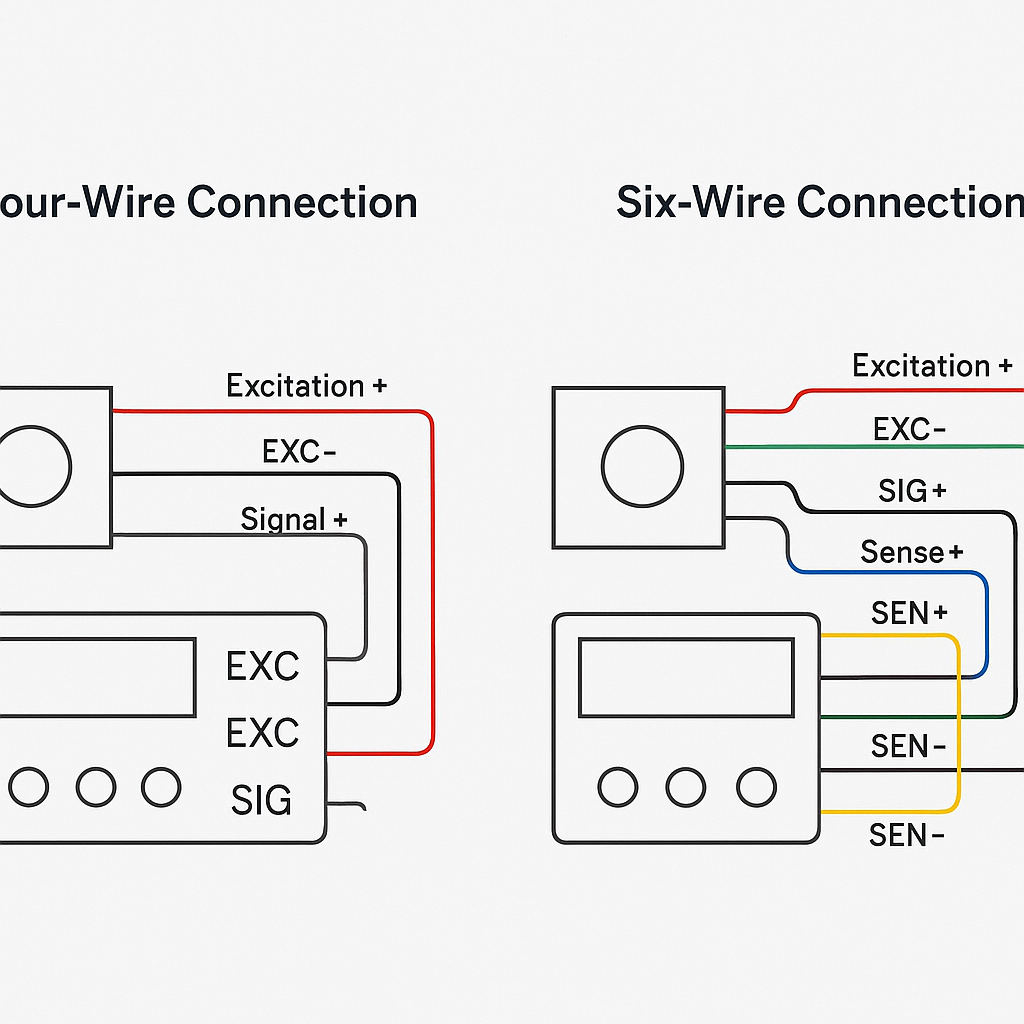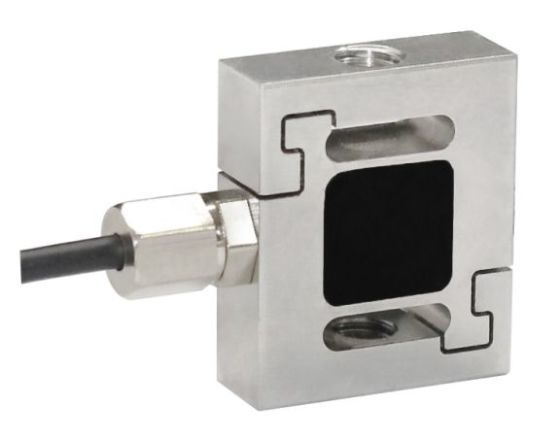In weighing systems, the connection between the load cell and the weighing indicator is critical for ensuring measurement accuracy and system reliability. There are two primary wiring methods for load cells: four-wire and six-wire configurations. Understanding the differences between these approaches is essential for selecting the right solution for your application.

1. Four-Wire Connection
A four-wire load cell typically has the following wires:
Excitation Positive (EXC+) – Red
Excitation Negative (EXC-) – Black
Signal Positive (SIG+) – Green
Signal Negative (SIG-) – White
Wiring Steps:
Connect the Excitation Positive (red) wire to the EXC+ terminal on the indicator.
Connect the Excitation Negative (black) wire to the EXC- terminal.
Connect the Signal Positive (green) wire to the SIG+ terminal.
Connect the Signal Negative (white) wire to the SIG- terminal.
Considerations:
Ensure all connections are secure.
Use proper insulation (e.g., heat-shrink tubing) to prevent short circuits or environmental damage.
This configuration is cost-effective and suitable for applications where cable lengths are short, and environmental conditions (such as temperature variations) are stable.

2. Six-Wire Connection
A six-wire load cell includes two additional wires:
Sense Positive (SEN+) – Blue
Sense Negative (SEN-) – Yellow
These sense lines provide feedback to the indicator, compensating for voltage drops caused by cable resistance. This allows the system to maintain accurate excitation voltage at the load cell, even over long cable runs or in environments with fluctuating temperatures.
Wiring Steps:
Connect the Excitation Positive (red) wire to EXC+.
Connect the Excitation Negative (black) wire to EXC-.
Connect the Signal Positive (green) wire to SIG+.
Connect the Signal Negative (white) wire to SIG-.
Connect the Sense Positive (blue) wire to SEN+.
Connect the Sense Negative (yellow) wire to SEN-.
Special Cases:
If a six-wire load cell needs to be connected to a four-wire junction box, the sense wires can be bridged with the excitation wires:
Connect SEN+ to EXC+.
Connect SEN- to EXC-.
This setup allows operation but sacrifices the sense feedback compensation, potentially reducing accuracy in demanding conditions.

3. How to Choose Between Four-Wire and Six-Wire?
✅ Four-Wire Systems: Best for short cable runs and cost-sensitive applications where environmental conditions are stable.
✅ Six-Wire Systems: Ideal for applications requiring higher accuracy, long cable lengths, or where temperature and humidity vary significantly.
Proper wiring practices and attention to system requirements will ensure your weighing system performs reliably over time.
